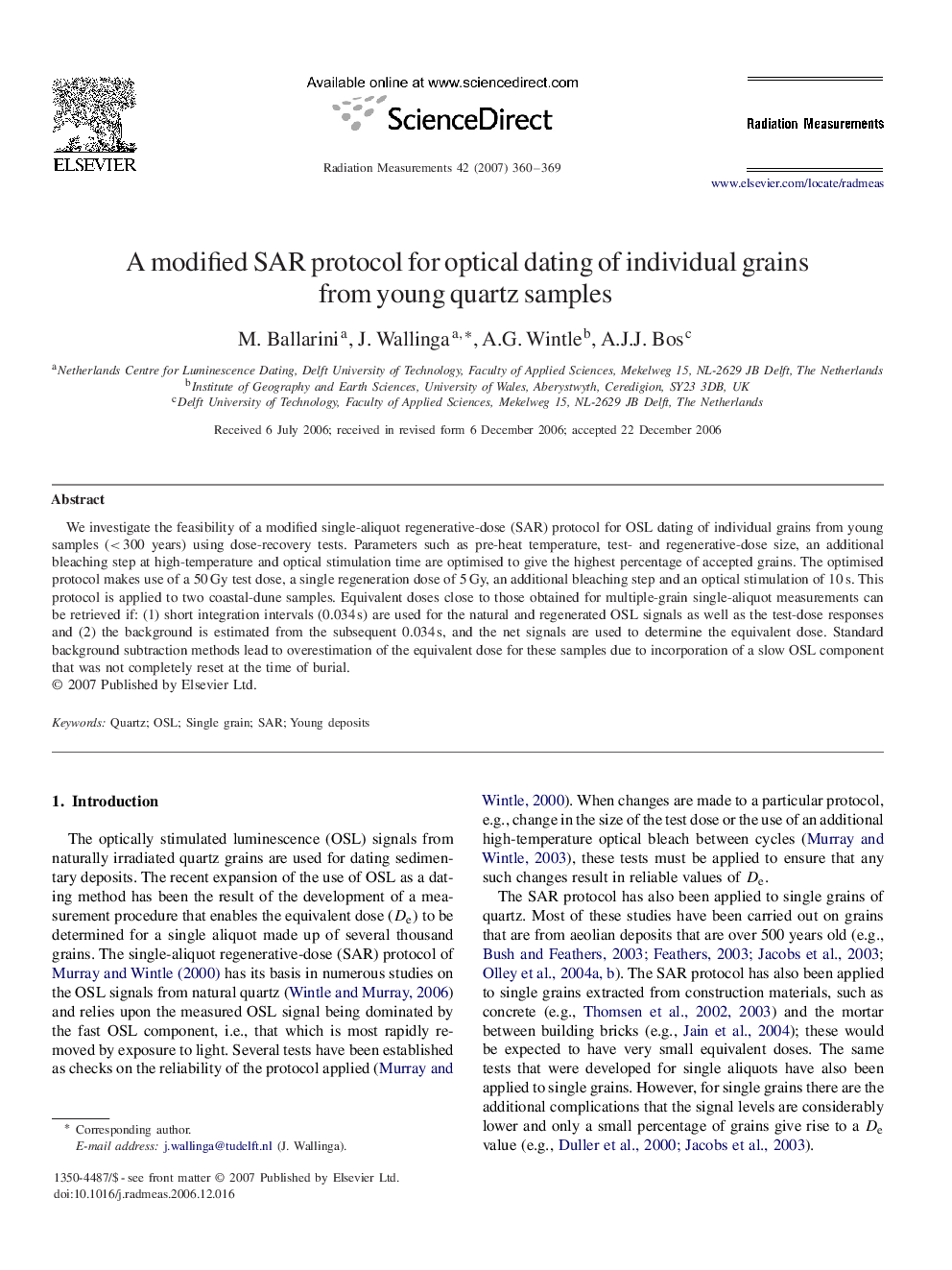| Article ID | Journal | Published Year | Pages | File Type |
|---|---|---|---|---|
| 1889357 | Radiation Measurements | 2007 | 10 Pages |
We investigate the feasibility of a modified single-aliquot regenerative-dose (SAR) protocol for OSL dating of individual grains from young samples (<300<300 years) using dose-recovery tests. Parameters such as pre-heat temperature, test- and regenerative-dose size, an additional bleaching step at high-temperature and optical stimulation time are optimised to give the highest percentage of accepted grains. The optimised protocol makes use of a 50 Gy test dose, a single regeneration dose of 5 Gy, an additional bleaching step and an optical stimulation of 10 s. This protocol is applied to two coastal-dune samples. Equivalent doses close to those obtained for multiple-grain single-aliquot measurements can be retrieved if: (1) short integration intervals (0.034 s) are used for the natural and regenerated OSL signals as well as the test-dose responses and (2) the background is estimated from the subsequent 0.034 s, and the net signals are used to determine the equivalent dose. Standard background subtraction methods lead to overestimation of the equivalent dose for these samples due to incorporation of a slow OSL component that was not completely reset at the time of burial.
